People
 David R. Montgomery studies the
evolution of topography and the influence of
geomorphological processes on ecological systems and human
societies. He received his B.S. in geology at Stanford
University (1984) and his Ph.D. in geomorphology from UC
Berkeley (1991). His published work includes studies of
the evolution and near-extirpation of salmon, fluvial and
hillslope processes in mountain drainage basins, the
evolution of mountain ranges (Cascades, Andes, and
Himalaya), and the analysis of digital topography. Current
research includes field projects in the Philippines,
eastern Tibet, and the Pacific Northwest of North America.
David R. Montgomery studies the
evolution of topography and the influence of
geomorphological processes on ecological systems and human
societies. He received his B.S. in geology at Stanford
University (1984) and his Ph.D. in geomorphology from UC
Berkeley (1991). His published work includes studies of
the evolution and near-extirpation of salmon, fluvial and
hillslope processes in mountain drainage basins, the
evolution of mountain ranges (Cascades, Andes, and
Himalaya), and the analysis of digital topography. Current
research includes field projects in the Philippines,
eastern Tibet, and the Pacific Northwest of North America.
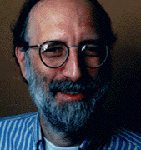 Harvey
Greenberg supports users of geographical
information systems in installation, use and data
acquisition. He assists programmers
and proselytizes for python and the unix command line.
Harvey maintains
student machines, web servers, and file servers, and helps
with GIS map and data servers.
He analyzes digital topography, and has spend a very long
time making water
flow downhill. And he does things to Mars. Because of
staff cutbacks, his
workload has expanded to ASTER satellite imagery and
brewing coffee.
Harvey will never give up aml or vi. :wq
Harvey
Greenberg supports users of geographical
information systems in installation, use and data
acquisition. He assists programmers
and proselytizes for python and the unix command line.
Harvey maintains
student machines, web servers, and file servers, and helps
with GIS map and data servers.
He analyzes digital topography, and has spend a very long
time making water
flow downhill. And he does things to Mars. Because of
staff cutbacks, his
workload has expanded to ASTER satellite imagery and
brewing coffee.
Harvey will never give up aml or vi. :wq
As of August, 2019, he is working quarter time in post-retirement.
Alumni
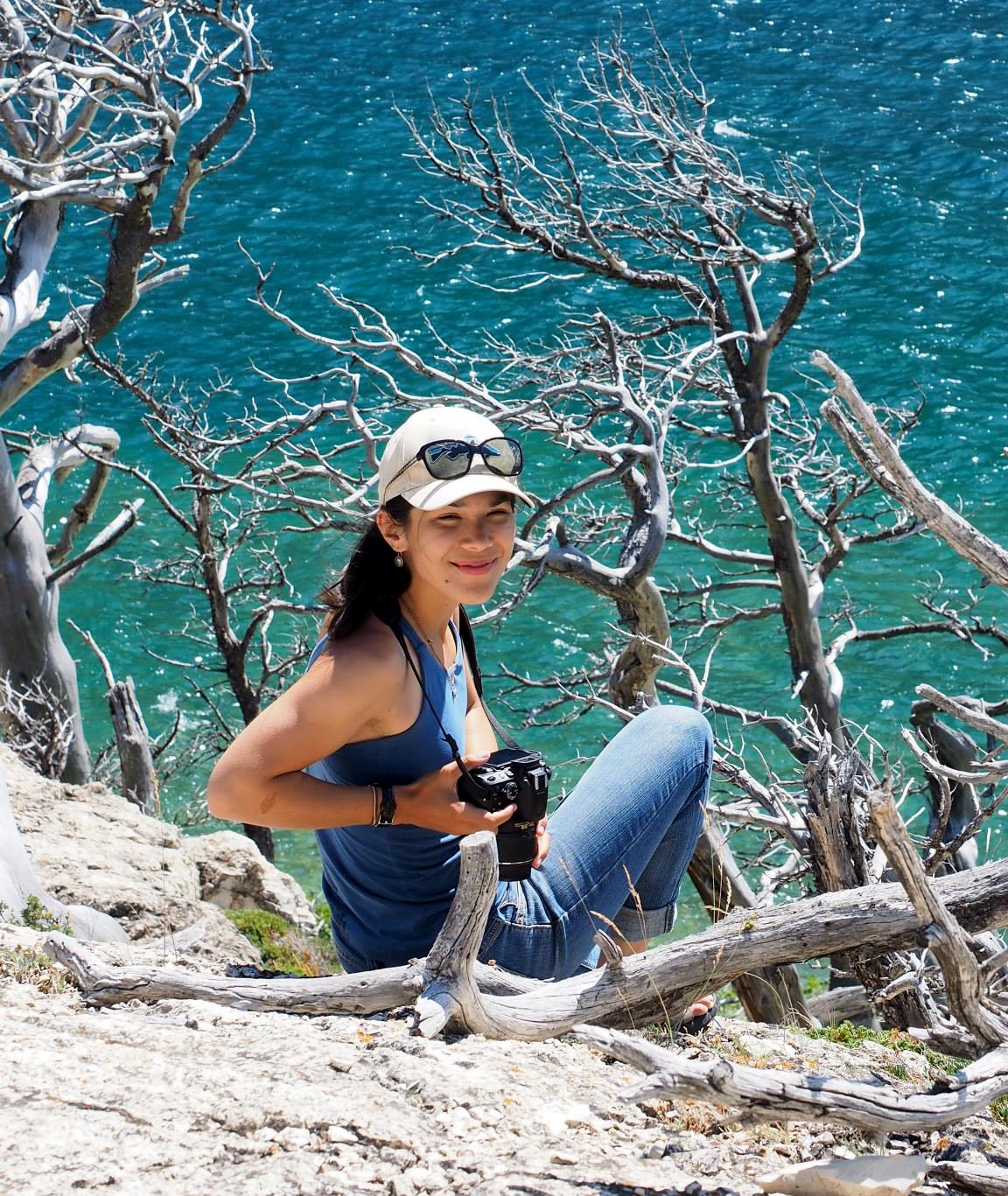 Sarah Schanz Sarah Schanz is interested in the
processes controlling river incision and fluvial landscape
evolution. Her research focuses on how lithology and large
woody debris control strath terrace formation and in the
different styles in which climate affects river incision.
She utilizes a variety of techniques including: GIS analysis,
geomorphic mapping, radiocarbon and lead-210 chronologies, and
numerical modeling.
Sarah Schanz Sarah Schanz is interested in the
processes controlling river incision and fluvial landscape
evolution. Her research focuses on how lithology and large
woody debris control strath terrace formation and in the
different styles in which climate affects river incision.
She utilizes a variety of techniques including: GIS analysis,
geomorphic mapping, radiocarbon and lead-210 chronologies, and
numerical modeling.
Vivian Leung studied sediment transport and fluid mechanics in rivers. Her research uses flume experiments to understand the interactions and feedbacks between fluid dynamics, sediment transport, stream bed morphology and woody debris.
Rolf Aalto, 2002, Ph.D., Geomorphic Form and Process of Sediment Flux within an Active Orogen: Denudation of the Bolivian Andes and Sediment Conveyance across the Beni Foreland (co-chair with T. Dunne).
Tim B. Abbe, 2000, Ph.D., Patterns, Mechanics and Geomorphic Effects of Wood Debris Accumulations in a Forest River System. Tim has come back to teach Fluvial Geomorphology in 2011.
Alison Anders, 2005, Ph.D., The Co-evolution of Precipitation and Topography (co-advised with B. Hallet and G. Roe).
John M. Buffington, 1995, M.S., Effects of Hydraulic Roughness and Sediment Supply on Surface Textures of Gravel-Bedded Rivers; 1998, Ph.D. The Use of Streambed Texture to Interpret Physcial and Biological Conditions at Waterhsed, Reach, and Subreach Scales.
Jeremy Bunn, 2003, M.S., Influence of Wood Debris on Debris Flow Runout.
Brian
Collins, 2009, Ph.D. The historical
ecogeomorphology of Puget Sound lowland rivers.
David Finlayson, 2001, M.S., Spatial Coincidence of Erosional and Metamorphic Hotspots in the Himalayas.
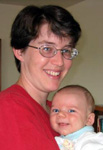 Karen Gran, 2005, Ph.D., River
Recovery at Mount Pinatubo, Philippines.
Karen Gran, 2005, Ph.D., River
Recovery at Mount Pinatubo, Philippines.
Shannon Hayes, 1999, M.S., Low-flow Sediment Transport on the Pasig-Potrero Alluvial Fan, Mount Pinatubo, Philippines.
 Amanda
Henck Schmidt
(aka Amanda Henck) PhD 2010
Spatial and temporal patterns of erosion in Western
China and Tibet
Amanda
Henck Schmidt
(aka Amanda Henck) PhD 2010
Spatial and temporal patterns of erosion in Western
China and Tibet
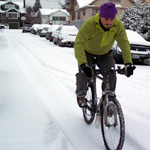 Charles Kiblinger, Staff, Assisted
with cartography and analysis of geo-spatial data,
with a focus on historical aerial photographs and
maps. He also built and maintained many of this
group's associated websites.
Charles Kiblinger, Staff, Assisted
with cartography and analysis of geo-spatial data,
with a focus on historical aerial photographs and
maps. He also built and maintained many of this
group's associated websites.
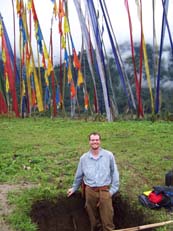 Isaac
Larsen studied landscape evolution in
the eastern Himalaya. His research focuses on determining
whether the region harbors threshold hillslopes,
quantifying relationships among landslide erosion, river
incision, and bedrock uplift, and untangling interactions
among climate, tectonics, and erosion.
Isaac
Larsen studied landscape evolution in
the eastern Himalaya. His research focuses on determining
whether the region harbors threshold hillslopes,
quantifying relationships among landslide erosion, river
incision, and bedrock uplift, and untangling interactions
among climate, tectonics, and erosion.
Tamara Massong, 1998, M.S. Influence of Lithology and Sediment Supply on the Distribution of Bedrock and Alluvial Channels.
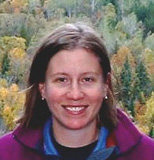 Sara Mitchell, 2006, Ph.D., Uplift
and Erosion of the Washington Cascades.
Sara Mitchell, 2006, Ph.D., Uplift
and Erosion of the Washington Cascades.
Chrysten Root, 2001, M.S., Geochemical Investigations of Landscape Evolution in Oregon and Hawaii.
Tim Schaub, 1999, M.S. Incorporating Root Strength Estimates into a Landscape-scale Slope Stability Model through Forest Stand Age Inversion from Remotely Sensed Data.
Kevin M. Schmidt, 1994, M.S., Mountain Scale Strength Properties, Deep-Seated Landsliding and Relief Limits; 1999, Ph.D., Root Strength, Colluvial Soil Depth, and Colluvial Transport on Landslide-Prone Hillslopes.
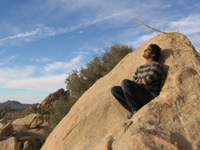 Amir Sheikh assisted in GIS based research
and classroom support with members of the Puget
Sound River History Project, the Geomorphological
Research Group (GRG), the Quaternary
Research Center (QRC), and the Puget Sound
Regional Synthesis Model (PRISM) program. He is
experienced in both geomorphologic and ecological
applications of spatial analysis including a) historical
landscape reconstruction b) landscape change analysis, and
c) topographic analysis in fluvial environments. He is a
project team leader for the Waterlines
Project at the Burke Museum, and is a collaborator
in developing place-based geoscience curricula for
underrepresented populations with an emphasis on Native
American students (DIGERS Project). He also assists in the
administration of SDE and ArcGIS map servers.
Amir Sheikh assisted in GIS based research
and classroom support with members of the Puget
Sound River History Project, the Geomorphological
Research Group (GRG), the Quaternary
Research Center (QRC), and the Puget Sound
Regional Synthesis Model (PRISM) program. He is
experienced in both geomorphologic and ecological
applications of spatial analysis including a) historical
landscape reconstruction b) landscape change analysis, and
c) topographic analysis in fluvial environments. He is a
project team leader for the Waterlines
Project at the Burke Museum, and is a collaborator
in developing place-based geoscience curricula for
underrepresented populations with an emphasis on Native
American students (DIGERS Project). He also assists in the
administration of SDE and ArcGIS map servers.
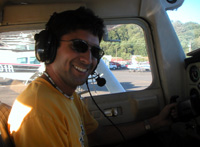 Sanjoy Som PhD. 2010. Studies
planetary geomorphology
Sanjoy Som PhD. 2010. Studies
planetary geomorphology
Jonathan D. Stock, 1996, M.S., Can we Predict Bedrock River Incision Using the Stream Power Law?
Shannon Stover, 1998, M.S., Channel Response and Flooding, Skokomish River, Washington.
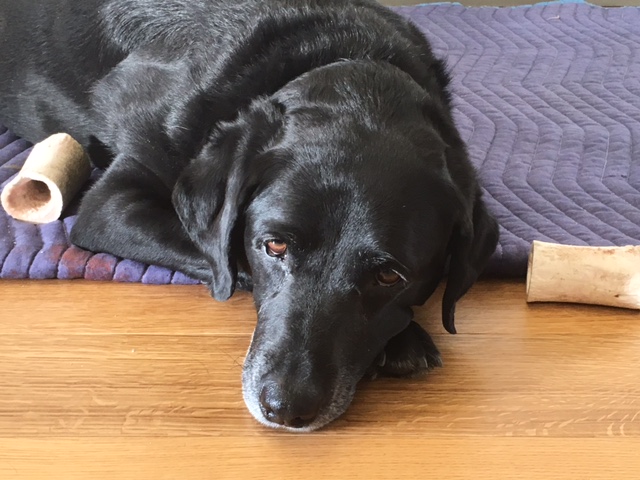 Loki T. Dog provided inspiration, companionship,
enthusiasm, and welcome distraction.
Loki T. Dog provided inspiration, companionship,
enthusiasm, and welcome distraction.
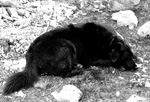 Xena T. Dog provided field assistance,
perspective, and spiritual guidance. Rest in peace, sweet
girl.
Xena T. Dog provided field assistance,
perspective, and spiritual guidance. Rest in peace, sweet
girl.
 Chris
Brummer, 2006, Ph.D., Downstream
Coarsening in Headwater Channels.
Chris
Brummer, 2006, Ph.D., Downstream
Coarsening in Headwater Channels. Byron Amerson,
2004, M.S.,
A comparison of the morphometry of glacial and fluvial
valleys
Byron Amerson,
2004, M.S.,
A comparison of the morphometry of glacial and fluvial
valleys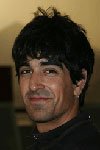 Noah
Finnegan, Ph.D. 2006, Erosional
Geomorphology of Namche Barwa (co-chair with B.
Hallet).
Noah
Finnegan, Ph.D. 2006, Erosional
Geomorphology of Namche Barwa (co-chair with B.
Hallet).